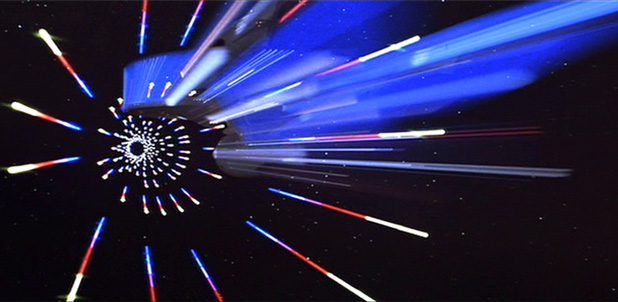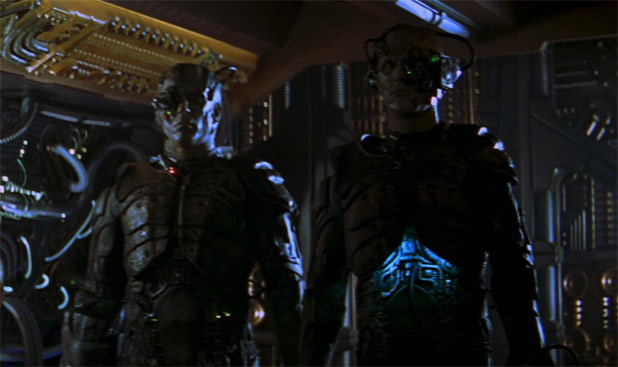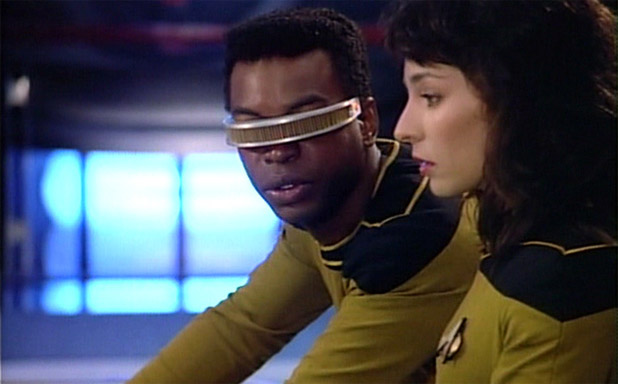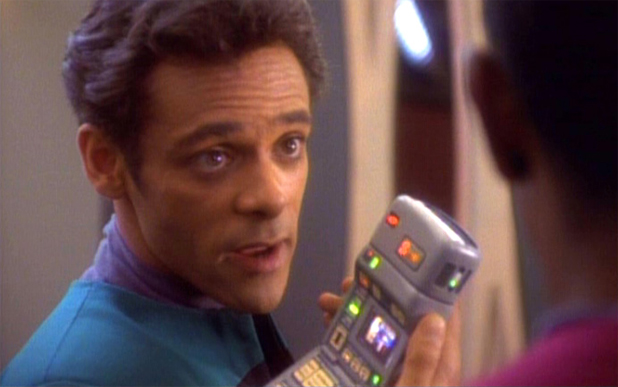Real Star Trek Science
We Might See Warp Drive Within Our Lifetimes

Dude, for real?!?! Yep, that’s the scuttlebutt! I don’t know about you, but I’ve been waiting for this news since I was a kid. If they get in high gear, I may actually fall within the age-range to see Warp Drive.
What’s this all about? Well, back in ’94 Mexican physicist Miguel Alcubierre put forth a concept for a real warp drive which at that time was impossible, mainly due to the immense fuel requirements.
The Borg Had To Start Somewhere…

I don’t know about you, but I’ve seen a lot of science fiction movies in my time and it’s beginning to seem like they’re predicting the future. Ya, I know what you’re gonna say…”duhhh”. Well, I don’t mean just in a good way like space travel and tricorders, but in a slightly more maniacal way too. I mean really, I don’t think it’s the best idea to teach primates to speak, give machines self-awareness, or start passing out green colored “mystery food” in the shape of squares. So when I saw the title of this particular article “Robots to organize themselves like a swarm of insects” it got my attention. Now, it’s not necessarily a hive mind they’re talking about…oh wait…yes it is.
More Scientific Advancement Spurred On By Star Trek

Another gadget that was inspired by Star Trek seems to be making its way into reality. This time it’s Geordi’s visor. After gathering data, the device uses an algorithm to translate it into sound. However, unlike hearing, this fascinating device activates the visual cortex of the user’s brain by delivering the purely auditory data. It allows the user to “see” their surroundings with quite a bit of detail, including recognizing written words.
Star Trek’s Bio-Mechanical Type Devices Getting Closer Still

We all know about Geordi’s visor and Picard’s heart. Compared to the devices we have now the sci-fi versions are light years ahead…or are they? Thanks to a recent breakthrough, machines that directly link to living things (i.e. humans) could become a reality. All this fabulous new science has the potential to lead to super cool ways of repairing humans who need it. Now…how to keep it out of the Borg’s hands…hmmmm?...
Devices that connect with the human body’s processes are being explored for biological sensing or for prosthetics, but they typically communicate using electrons, which are negatively charged particles, rather than protons, which are positively charged hydrogen atoms, or ions, which are atoms with positive or negative charge.
“So there’s always this issue, a challenge, at the interface – how does an electronic signal translate into an ionic signal, or vice versa?” said lead author Marco Rolandi, a UW assistant professor of materials science and engineering. “We found a biomaterial that is very good at conducting protons, and allows the potential to interface with living systems.”
New Real Life Tech Looks A Lot Like Star Trek’s Medical Tricorder

We love new technological advancements that seem like first steps toward Star Trek tech. Here’s another one that we found recently that is headed in the direction of the Medical Tricorder.
The Fraunhofer Institute for Applied Optics and Precision Engineering IOF has recently announced a new imaging system that can take microscopic images quickly, by hand, and without blurring. These images can be used for medical diagnoses, such as skin cancer.
Star Trek’s Data, Not The Only “Automaton” Trying To Be More Human

We all love Data and his quest to be more human. It makes us feel special as human beings that he would hold us in such high esteem. Watching the early episodes of Next Gen, I notice that it’s his quirky pre-programmed mannerisms, speech patterns & movements that seem to initiate this quest. In one episode he talks about a randomizing algorithm that controls his blinking so he will fit in better and put humans interacting with him at ease. It’s just these kinds of things that scientists at Georgia Institute of Technology are starting to think about while working on the latest robots.
Star Trek’s Dermal Regenerator One Step Closer To Reality. Dr. Crusher Approves

One of our readers brought a new skin repair technique for burn victims to our attention. On a segment from a National Geographic video, the inventor of this new technology calls it a stem-cell gun, although it looks more like a bulky air brush to us. It sprays stem-cells taken from the burn victim back onto the wounded area of skin. Unlike a skin graft that can take months to heal, and is prone to infection, the Skin Gun can be used to heal burn-damaged skin in a matter of days. While we watched this video we couldn’t help but think that this leap in medical technology seemed just like a real-life step toward technology we’ve been seeing on Star Trek for decades. Seeing the perfect looking new skin that healed in only 4 days, on one of the first trial patients, is so astounding it gave us goose bumps!
You can watch the video below.
Please be aware that some of the images in the video are graphic.
Is The 3D Food Printer The Next Step Toward Star Trek’s Replicator?

“Tea. Earl Gray. Hot.” As I’m sure many of you have, I’ve wanted to say that line to a cube shaped hole in the wall for the last 24 years or so. Now, we may be one step closer to getting our collective wish. What started as a project at Cornell University is currently being tested out at the French Culinary Institute in Manhattan, a 3D food printer.
OK, so it’s not a replicator like we’re used to seeing on Star Trek, but it does seem to indicate that the scientists are actively trying to get there. For now, this 3D food printer is quite a bit like the replicator technology NASA is working on only in food form. It builds the desired food out of multiple fine layers of said food in a paste form.
NASA Has Found A New Planet; "Star Trek’s Vulcan" Kepler-10b

Hey kids, we found Vulcan! …or is that Vulcan 2, since the first one was destroyed? …uurrr, well, technically when they mention Vulcan while talking about this new planet, they are referencing the god of fire from Roman mythology. However, maybe we can start a write in campaign to have the new planet’s name changed permanently to Vulcan for our own selfish purposes. In any case, we find it exciting that scientists are still looking to the skies, trying to push the limits of our Earthly boundaries. With all the new discoveries it’s just a matter of time before we take to the stars ourselves.
NASA’s Kepler mission (named for the space telescope) has discovered Kepler-10b, its first rocky planet outside our solar system. Its surface is thought to be more than 2500 degrees Fahrenheit (hotter than lava flows on Earth), so I doubt we’ll be moving there anytime soon, but hey, at least they’re looking.

